
The meadow brown is a butterfly found in the Palearctic realm. Its range includes Europe south of 62°N, Russia eastwards to the Urals, Asia Minor, Iraq, Iran, North Africa and the Canary Islands. The larvae feed on grasses.

The silver-washed fritillary is a common and variable butterfly found over much of the Palearctic realm – Algeria, Europe and across the Palearctic to Japan.

The map is a butterfly of the family Nymphalidae.

The purple-shot copper is a butterfly in the family of the Lycaenidae or copper butterflies and in the genus of the Lycaena.

The purple-edged copper is a butterfly of the family Lycaenidae.

Polyommatus eros, the Eros blue or common meadow blue, is a species of blue butterfly found in the Palearctic.

Coenonympha oedippus, the false ringlet, is a species of butterfly in the subfamily Satyrinae. It is found in Austria, Belgium, the Netherlands, France, Hungary, Italy, Japan, Kazakhstan, Liechtenstein, Mongolia, Poland, Russia, Slovakia, Slovenia, Spain, Switzerland, and Ukraine. It is extirpated from Bulgaria, Germany, and Slovakia.
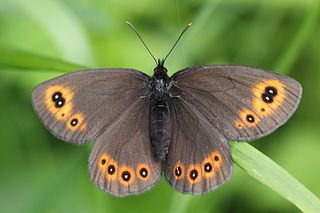
Erebia medusa, the woodland ringlet, is a member of the subfamily Satyrinae of the family Nymphalidae.
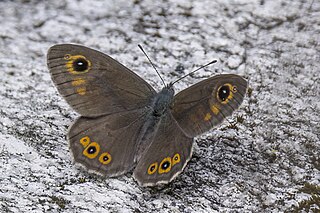
Lasiommata maera, the large wall brown, is a butterfly in the family Nymphalidae.

Coenonympha hero, the scarce heath, is a butterfly species belonging to the family Nymphalidae.

Coenonympha glycerion, the chestnut heath, is a butterfly species belonging to the family Nymphalidae. It can be found in Eastern Europe and east across the Palearctic to Siberia and the Caucasus to North Korea.

Glaucopsyche alexis, the green-underside blue, is a butterfly of the family Lycaenidae. It is found in the Palearctic.

Agriades optilete, the cranberry blue, is a butterfly of the family Lycaenidae. It is found in north eastern Europe, the Alps, North Asia, Japan, Korea and north western North America.

Polyommatus (Plebicula) dorylas, the turquoise blue, is a butterfly of the family Lycaenidae. It is found in southern Europe, Asia Minor, the Ural Mountains, Caucasus and Transcaucasia. Its wingspan is 15–17 mm. The butterfly's common name comes from the dazzling bright blue colour of male's wings. The larvae feed on Anthyllis vulneraria. The butterfly flies from May to September in two generations. Habitats include flowery meadows in rocky areas at 500–2000 m.
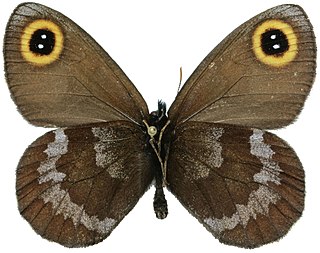
Erebia cyclopius is a species of butterfly of the subfamily Satyrinae in the family Nymphalidae. It is found through Siberia, northern Mongolia, northern China and North Korea. The habitat consists of forest edges, flowery meadows and sparse larch forests.

Boeberia is a genus of satyrine butterflies containing a single species Boeberia parmenio found in the Altai mountains South Siberia, Mongolia, Yakutia, Amur and North east China.
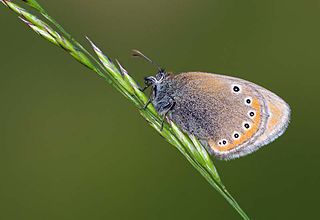
Coenonympha leander, the Russian heath, is a butterfly belonging to the family Nymphalidae. It is found in northern Greece, Hungary, Bulgaria, southern Russia, Asia Minor, Armenia and Iran. The habitat consists of warm grassy areas.

Euphydryas intermedia synonym ichnea is a small butterfly found in the Palearctic that belongs to the browns family. It occurs up to 2200 m above sea level.
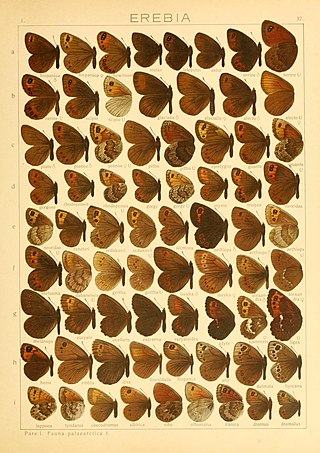
Erebia dabanensis is a small butterfly found in the East Palearctic that belongs to the browns family.

Neolysandra coelestina is a butterfly found in the Palearctic that belongs to the blues family.





















